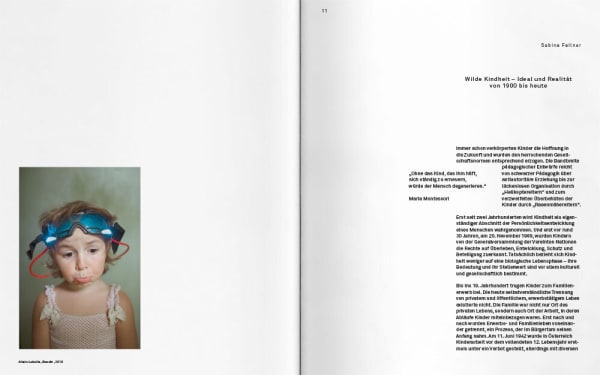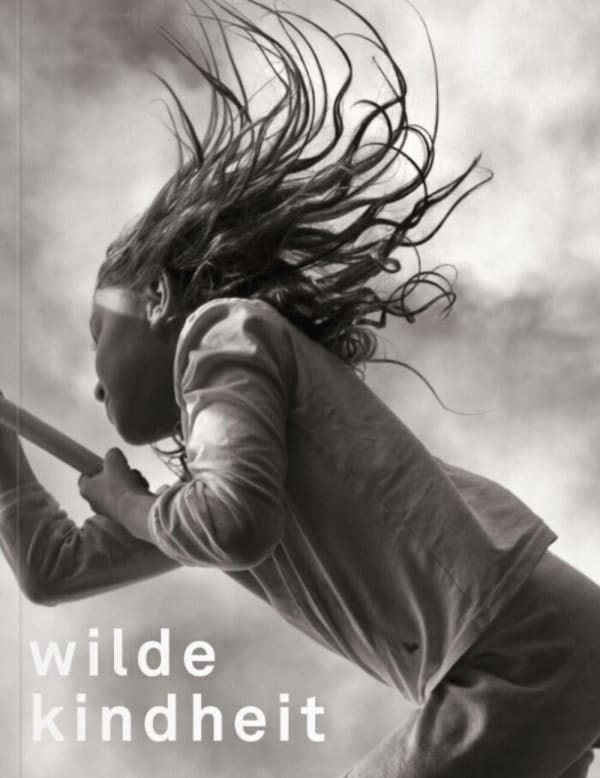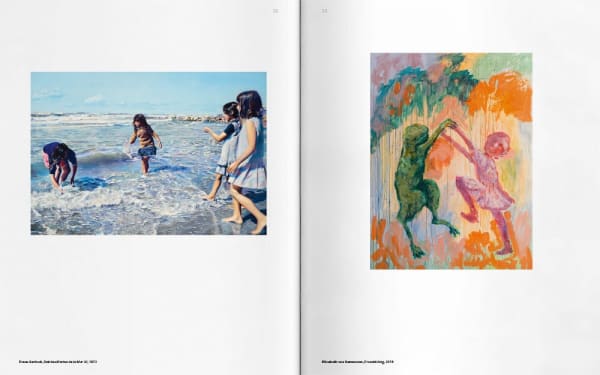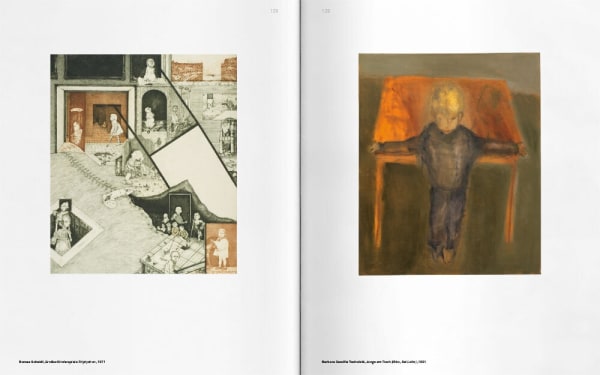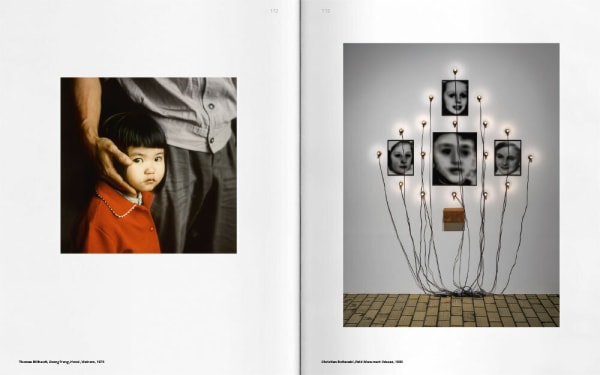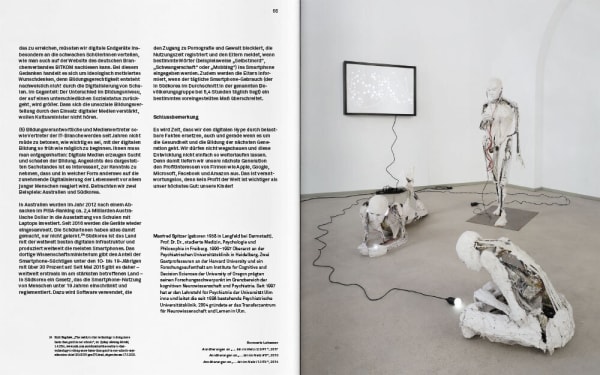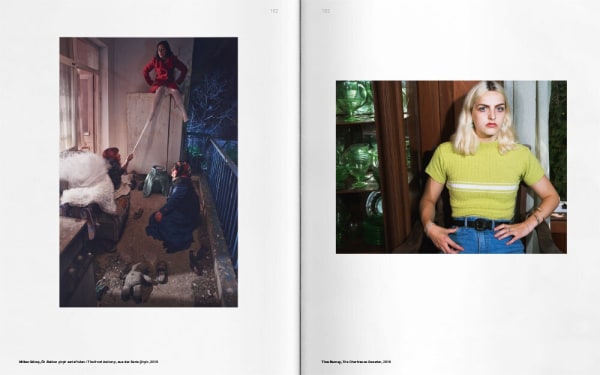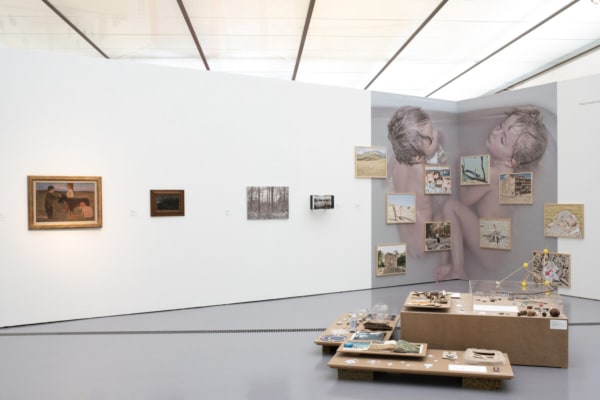Wild Childhood – Ideal and reality from 1900 up to the Present: LENTOS Kunstmuseum, Linz, Austria
Past exhibition
Overview
Curated by Sabine Fellner and Elisabeth Nowak-Thaller, this cross-media show will put on display 170 works dating from 1900 right up to the present day in the fields of painting, graphics, sculpture, video, photography and installation by artists such as Gillian Wearing, Jeff Wall, Sally Mann, Oskar Kokoschka, Christian Boltanski, Martin Honert, Maria Lassnig, Sean Scully, Egon Schiele and Mary Kelly.
Artists
Uli Aigner, Aigner/Kosakowski, Özlem Altin, Beni Altmüller, Iris Andraschek, Siegfried Anzinger, Christy Astuy, Iris Christine Aue, Stephan Balkenhol, Tina Barney, Werner Berg, Sibylle Bergemann, Thomas Billhardt, Julie Blackmon, Hans Böhler, Christian Boltanski, Eugenie Breithut-Munk, Klemens Brosch, Vanja Bucan, Wilhelm Busch, Maria Bussmann, Sevda Chkoutova, Clément Cogitore, Philipp Connard, Lovis Corinth, Maciej Dakowicz, Nienke Deutz, Gerhild Diesner, Oliver Dorfer, Isabelle Dutoit, Franz Dutzler, Albin Egger-Lienz, Titanilla Eisenhart, Georg Eisler, VALIE EXPORT, László Fehér, Fabian Fink, Judith P. Fischer, Martina Fleck, Maia Flore, Judy Fox, Padhi Frieberger, Fritz Fröhlich, Friedrich Frotzel, Jorge Fuembuena, Katsura Funakoshi, Helene Funke, Theo Garvé, Franz Gertsch, Glaser/Kunz, Bernhard Gobiet, Sofia Goscinski, Nilbar Güreş, Maria Hahnenkamp, Wolfgang Hanghofer, Heidi Harsieber, Bertram Hasenauer, Carry Hauser, Gottfried Helnwein, Frans Hofmeester, Karen Holländer, Irene Hölzer-Weinek, Martin Honert, Bernadette Huber, Lisa Huber, Ursula Hübner, Friedensreich Hundertwasser, Frederick Jaeger, Allen Jones, Leander Kaiser, Eginhartz Kanter, Mary Kelly, Gerhard Knogler, Oskar Kokoschka, Anton Kolig, Silvia Koller, Broncia Koller-Pinell, Michal Kosakowski, Auguste Kronheim, Maximilian Kurzweil, Alain Laboile, Katharina Lackner, Marie Jo Lafontaine, Erwin Lang, Lotte Laserstein, Maria Lassnig, Marie Luise Lebschik, Rudolf Leitner-Gründberg, Doris Lenz, Ulrike Lienbacher, Rosmarie Lukasser, Anna Mahler, Sabine Maier, Sally Mann, Gerhard Marcks, Pedro Marzorati, Frans Masereel, Henri Matisse, Matthias May, Ferdinand Melichar, Paula Modersohn-Becker, Inge Morath, Alois Mosbacher, Koloman Moser, Otto Muehl, Otto Mueller, Muntean/Rosenblum, Ernst Nepo, Walter Niedermayr, Rita Nowak, Monika Oechsler, Eamon O’Kane, Ruth Orkin, Burgis Paier, Margit Palme, Josef Pausch, Vanessa Jane Phaff, Monika Pichler, Andrzej Pietrzyk, Elisabeth Plank, Lois Pregartbauer, Bernhard Prinz, Erwin Rachbauer, Beate Rathmayr, Carl Anton Reichel, Frenzi Rigling-Mosbacher, Alexander M. Rodtschenko, Emy Roeder, Anton Romako, Elisabeth von Samsonow, Roman Scheidl, Egon Schiele, Markus Schinwald, Christoph Schmidberger, Karl Schmidt-Rottluff, Anne Schneider, Ramona Schnekenburger, Martin Schnur, Claudia Schumann, Ludwig Schwarzer, Sean Scully, Deborah Sengl, Marielis Seyler, Clara Siewert, Fritz Simak, Max Slevogt, Kiki Smith, Ernst Stöhr, Hans Strohofer, Jock Sturges, Monika Supé, Wilhelm Thöny, Viktor Tischler, Elfriede Trautner, Kerry Tribe, Gabi Trinkaus, Barbara Camilla Tucholski, Massimo Vitali, Maja Vukoje, Bárbara Wagner & Benjamin de Burca, Nurith Wagner-Strauss, Jeff Wall, Bruno Walpoth, Marijke van Warmerdam, Gillian Wearing, Nives Widauer, Franz Wiegele, Reimo S. Wukounig, Luo Yang, Andre Zelck, Laurent Ziegler, Yantong Zhu
About the exhibition
Children have always embodied society's hope for a better future. This has led to education running in tandem with dominant social norms. The ideas governing education cover a wide range, from the old fashioned disciplinary approach through anti-authoritarian child-centred methods all the way to today's total surveillance and relentless monitoring by helicopter parents. How, then, is modern education preparing children for the challenges the future has in store?
At present, birth rates in Central Europe are falling. In our world, which focuses on optimisation, children are increasingly understood as live repositories of potential; they are viewed with an eye to their usability, primarily as capital, as a human resource. Every single child is being optimised as an investment in society's future. "Status panic"and "education panic" as described by the sociologist Heinz Bude combine to turn education into status tokens in an ever more virulent struggle for social prestige. This leads to excessive demands being placed on children and teenagers - and the excessive stimulation that goes with it. Free development and purpose free play is replaced by the pedagogical goals of high achievement and surveillance.
At the same time, the boom in digitisation has created a situation where childhood is a time that is largely spent indoors, in front of the computer, with the mobile playing the role of an extended umbilical cord. Children's natural desire to be up and about is suppressed more and more. Their realm of fantasy and imagination is pushed aside by artificial, digital worlds. Second hand information, a permanent flood of pictures and entertainment industry dreamscapes become substitutes for real experience; chimaeras that home in on children and overwhelm them. Is there any space left today for free development, purposeless play, dreaming, fantasising, doing nothing in particular and boredom, all of them prerequisites for creativity?
Shaped by digitisation, the current young generation experiences constant stress. Anyone not "always on-line" feels liable to miss out on some all important stimulus. Social media demands the presentation of a permanently optimised self. "Selfies" provide idealised pictures in an idealised world. These pictures cannot be authentic nor are they allowed to be authentic. Attesting to the alienation from one's self, these pictures vie for attention in a society typified by a culture of control. What are the effects that the demands and ideals imposed by these new media have on children and adolescents?
Childhood and adolescence as stages of life in their own right are ideas that really date only to the modern period. So where does childhood feature as a stage of life today? How long is today's childhood allowed to last?
The exhibition illustrates thematically grouped aspects of childhood and an understanding of the role it plays in life and asks questions linked to the topicality of each of these aspects. The life world of children who still have freedom from care, their urge to explore the environment and their dreams are put centre stage and contrasted with their fears and their sense of powerlessness. In addition, the focus includes children's reactions to expectations placed on them, to hopes, demands, attempts at disciplining them and to surveillance scenarios.
Works
Installation Views


